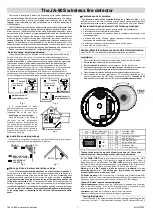
Sentinel V SC and RT Operation Manual
September
2017
EAR-Controlled Technology Subject to Restrictions Contained on the Cover Page.
Page 105
7. Check the housing captive nuts for corrosion and that they are not stripped or worn. Replace as
necessary (see
). Captive nuts snap into place with the small bump fac-
ing the housing.
8. Examine the end-cap assembly bolts and washers for corrosion; replace if necessary.
Figure 54.
End-Cap Mounting Hardware
9. Install all four sets of hardware until “finger-tight.”
10. Tighten the bolts in small increments in a “cross” pattern until the split washer begins to flatten
out.
11. Use a torque wrench to tighten the bolts to the recommended torque value of 1.7 Nm (15 Pound-
Force Inch).
Apply equal pressure to the O-ring as the bolts are tightened. If one bolt is tightened more
than the others, the O-ring can become pinched or torn. A damaged O-ring will cause the
system to flood.
Do not over tighten the bolts that hold the transducer, housing and end cap together. If the
bolts are over-tightened, the housing bolts or captive nut threads can strip, crack, or break
causing the system to flood. On the other hand, leaving the bolts too loose can cause the
system to flood.
Tighten the hardware to 1.7 Nm (15 Pound-Force Inch).
If a torque wrench is not available, tighten the bolt until the split washers are flat, and then
turn the bolt ¼ turn more.
















































